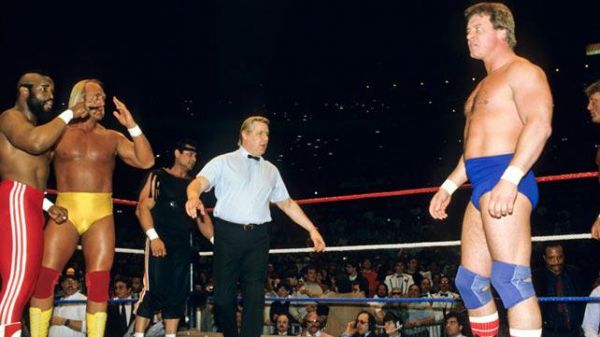How WrestleMania Almost Killed WWE

On March 31, 1985 was going to be the night that changed everything, regardless of the success or failure of the show. Fortunately for The McMahons, the former looked likely before the first bell rang,
Madison Square Garden was packed and jacked, and thousands more gathered in theatres and arenas across the country to watch on closed-circuit television. The atmosphere was electric even if there was an understandable sky-high tension behind the scenes. Despite all the potential pitfalls though, WrestleMania was a triumph. The show combined spectacle, star power, and entertainment in a way wrestling never had before.
The first ever WrestleMania match saw Tito Santana take on The Executioner (played, this time, by Buddy Rose under the hood). Santana was a popular babyface, coming off a recent run as Intercontinental Champion, and his win was a well-received start to proceedings. One of the shortest matches in WrestleMania history and and an easy talking point from the undercard for WWE to promote came next, King Kong Bundy's squash win over S.D. Jones was announced as going just nine seconds, even though in reality, it was closer to 23. Its role in establishing Bundy as a main event threat was crucial, as he would go on to headline WrestleMania II. Later on, Andre The Giant slammed Big John Studd to win a gimmicked $15,000 prize in a match featuring two more monsters for Hulk Hogan to eventually defeat. The match doesn't hold up now but the spectacle of seeing the two behemoths collide was exactly what the New York casuals were going to have their eyes widened by.
This was the modus operandi. David Sammartino's stinker with Brutus Beefcake was only there for those who'd been in the Garden all along to tell the newbies about David's Da, and the likes of Ricky Steamboat, Junkyard Dog and The US Express were better wrestling babyfaces than the breakout stars the McMahons needed in that moment, but all played their part in between the biggest headlines. One of which was the crowning of Wendi Richter as Women's Champion with victory over Lelani Kai, alongside semi-regular star Cyndi Lauper. The match was heavily tied into the phenomenally successful "Rock ‘n’ Wrestling Connection", with Cyndi Lauper’s presence and the MTV ties continuing to provide monster dividends. At this point, Richter was positioned as the female counterpart to Hulk Hogan - a neon crossover star-in-the-making. The match itself wasn’t technically great, but the crowd were, and the presentation of the finish soared as a result. The challenger won with a roll-up, reclaiming the belt in a moment that would have been more significant in the years to come had Richter's run not ended in a money disagreement and a screwjob that returned the gold to a masked Fabulous Moolah.
Ultimately, WrestleMania still had to stand up as something resembling a thoroughbred wrestling show, and like all staple wrestling classics, the main event needed to deliver. Hogan and T vs Piper and Orndorff was always going to be the the match that made or broke WrestleMania. Despite the aforementioned backstage drama between some of the combatants and the multiple moving parts thanks to involvement from cornermen Jimmy Snuka and Bob Orton, the match itself was a wild, chaotic brawl that set the 'World's Most Famous Arena' on fire. Muhammad Ali served as a special guest enforcer, and Liberace and the Rockettes adding to the glitz beforehand. The babyfaces won (though notably Hogan didn't pin Piper, saving further disputes for future hot houses) the event ended on a high note, with the heroes victorious and the crowd ecstatic. Business being done the proper way, and this way doing proper business. The numbers came in - WrestleMania was an enormous financial success. WWE had survived and thrived, and the long path to monolithic supremacy had been paved.
But what was the legacy of the gamble?
(CONT'D)